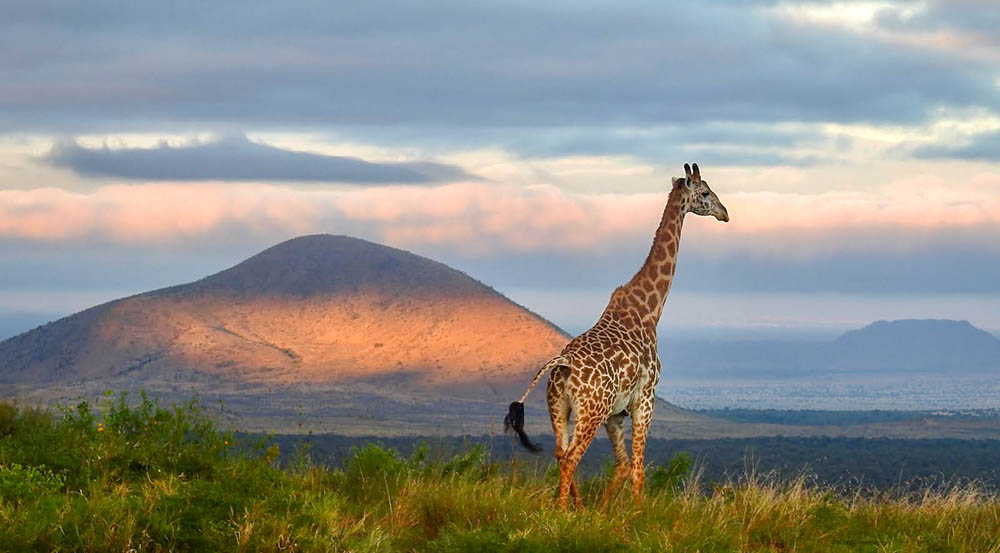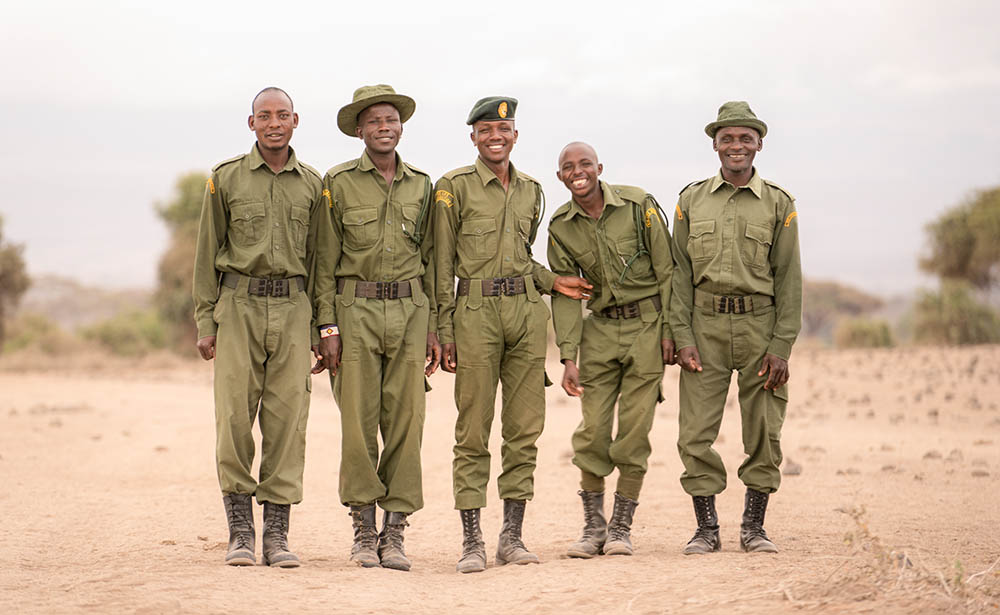 In the grass, the tawny bodies are motionless, as if there is no sign of life.
In the grass, the tawny bodies are motionless, as if there is no sign of life.
But the herder knows better. Keeping his livestock at a safe distance, he watches, and eventually there is the swish of a black-tipped tail. The seven lions are lying in the shade, calm and at ease. It’s a pride of two adults, four juveniles and a cub. A growing family.
The following morning, the herder returns to the same area. This time he can smell carrion; the lions must have fed overnight. He eventually spots them, again lying motionless in the shade.
Curious to see what they have fed on, he approaches closer, and closer still. The lions don’t move. Something is wrong.
All seven are dead.
They have fed on a goat carcass laced with poison, assumedly in retaliation for killing livestock. It’s a huge loss to a vulnerable population of lions.
On a different day and in a different place, an elephant is found dead with a spear wound in his back. His tusks are gone; he’s been poached. In this case, the poachers get away, and the ivory is not recovered.
In yet another corner of the ecosystem, a land buyer from ‘out of town’ has bought a 40-acre piece of wilderness. He builds a fence to keep out the Maasai and their livestock, but no-one checks if any animals are trapped inside before it is completed. Or worse, no-one cares. The fence builders drive off, and a family of nine giraffes is trapped inside the fence, with no source of water. By the time rangers are notified, seven have died of dehydration, and two can barely stand.
Aside from all being horrendous incidents that took place in the Greater Amboseli Ecosystem in the last year, these events have one thing in common:
They happened in places outside Big Life’s core area of operation.
We wish we could expand our circle of protection, and in an ideal world of limitless resources, we would. But we believe it is better to do the job well within our core 1.6 million acres than to be stretched too thin.
This is not to say that bad things don’t happen where we work, but because of our presence (and the support of partners), these incidents are very rare in our area of operation. For example:
In the last 4 years, no lions have died from poisoning in areas covered by our Predator Compensation Fund, while 21 lions have been poisoned in neighboring areas with no compensation.
The last time an elephant was poached in Big Life’s area of operation was March 2018, also killed by a spear. But we arrested the poachers two days later and recovered the ivory.
We have land lease agreements with hundreds of landowners, currently keeping 26,000 acres of wild land free from fencing, and thereby keeping important wildlife corridors open and grazing lands intact.
In the Amboseli ecosystem, because of Big Life, animals are protected. The biggest danger they face now is to their home.

Land subdivision is breaking large community-owned lands into thousands of privately-owned parcels. This shattering of the ecosystem is the greatest long-term threat to this incredible place.
We already have the solution – conservation land leases to protect the most important wildlife corridors and grazing areas. Communities are eager to participate, and we’re very relieved that in the near-term, people realize the importance of funding leases.
If we can get ongoing funding to lease the most important areas, then we are well on our way—for now—to keeping this ecosystem alive.
But ironically, at a time when there is much to celebrate, we are facing an equally serious problem: funding for all of our other critical programs.
The programs that prevent lion prides from being poisoned, elephants from being poached, and fences from choking the landscape. The programs that put children through school, provide healthcare in remote areas, and keep the peace between farmers and elephants.
For 10 consecutive years our programs and impact have grown, and with them, our budgets. In synchronicity, amazingly, so has all of your support. Each year for the last ten years, more funds were raised than the last.
But we’re now in a position that we’ve never been in before: fundraising is down so far this year that for the first time, we are in severe danger of being stretched too thin in our core area.
With just six weeks to go in the year, donations are down by more than 45%.
This reality is heartbreaking, as our budget is not just a number. It is not just a goal to achieve.
Our budget represents each of our rangers and the salaries that keep them in the field stopping poachers and wildlife traffickers. It represents the fuel for the vehicles and planes that are critical to patrolling thousands of miles across vast terrain. It represents the legal costs of fighting to ensure wild land doesn’t disappear forever. It represents scholarships for a child who lost a family member to human-wildlife conflict.
Our budget represents the price we need to pay to ensure the Greater Amboseli Ecosystem survives now and far into the future.
We need your help. Amboseli needs your help.
Please donate to keep Big Life doing what we do, where we do it. Because what we do keeps animals, and the ecosystem they inhabit, alive.
DOUBLE YOUR IMPACT FOR WILDLIFE
Any donation will be matched before the end of the year up to $250,000.
This means that your donation will stretch even further across the ecosystem, and have double the impact for wildlife and wild lands.

